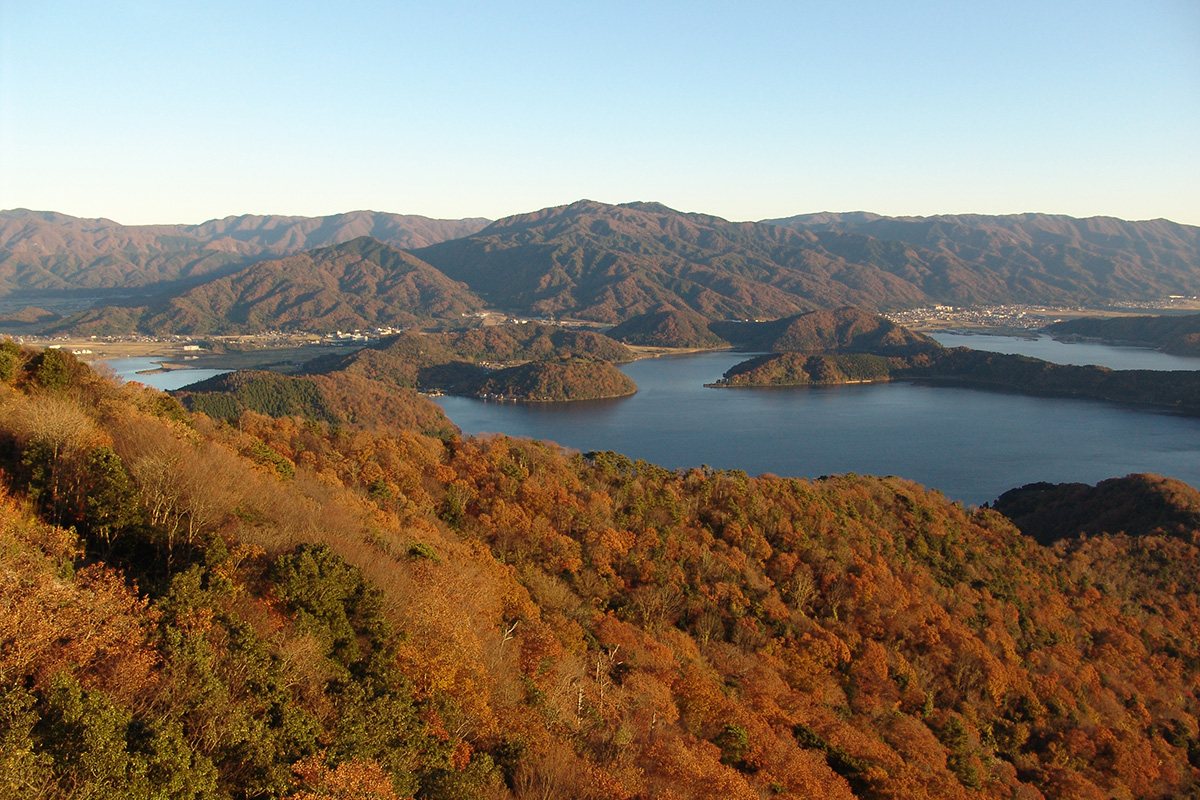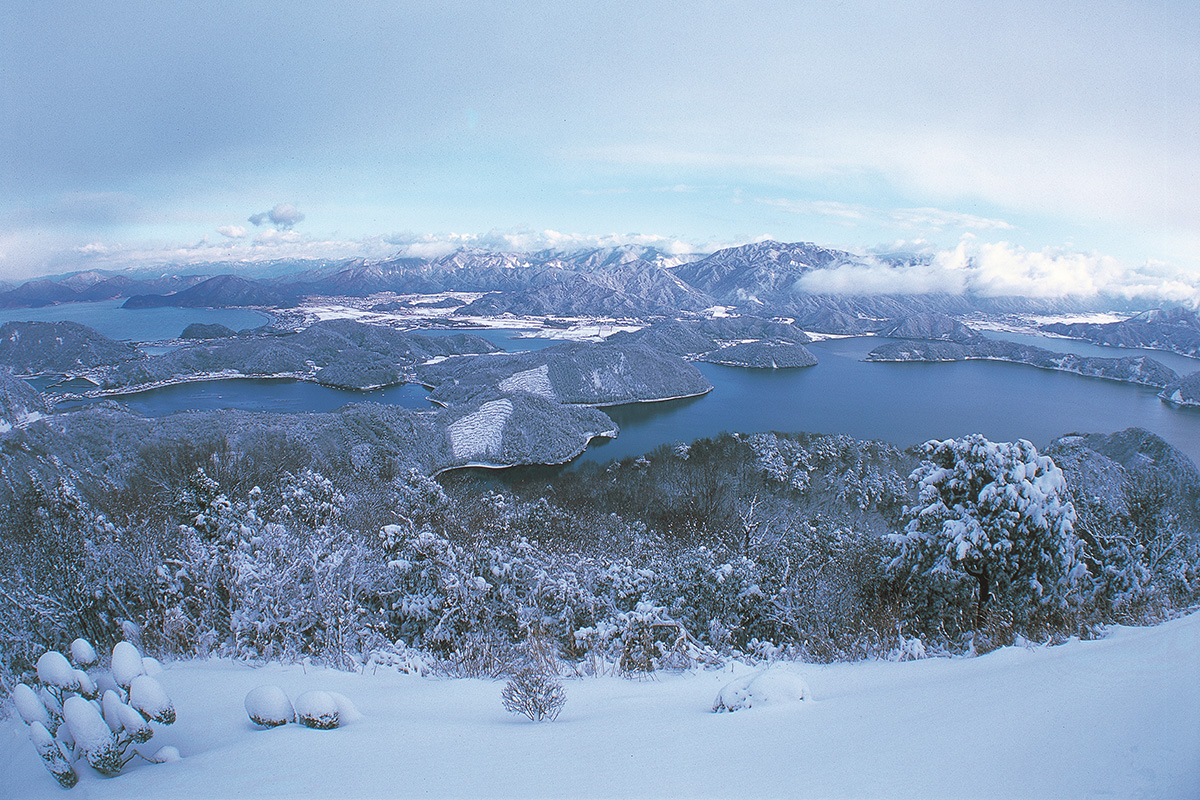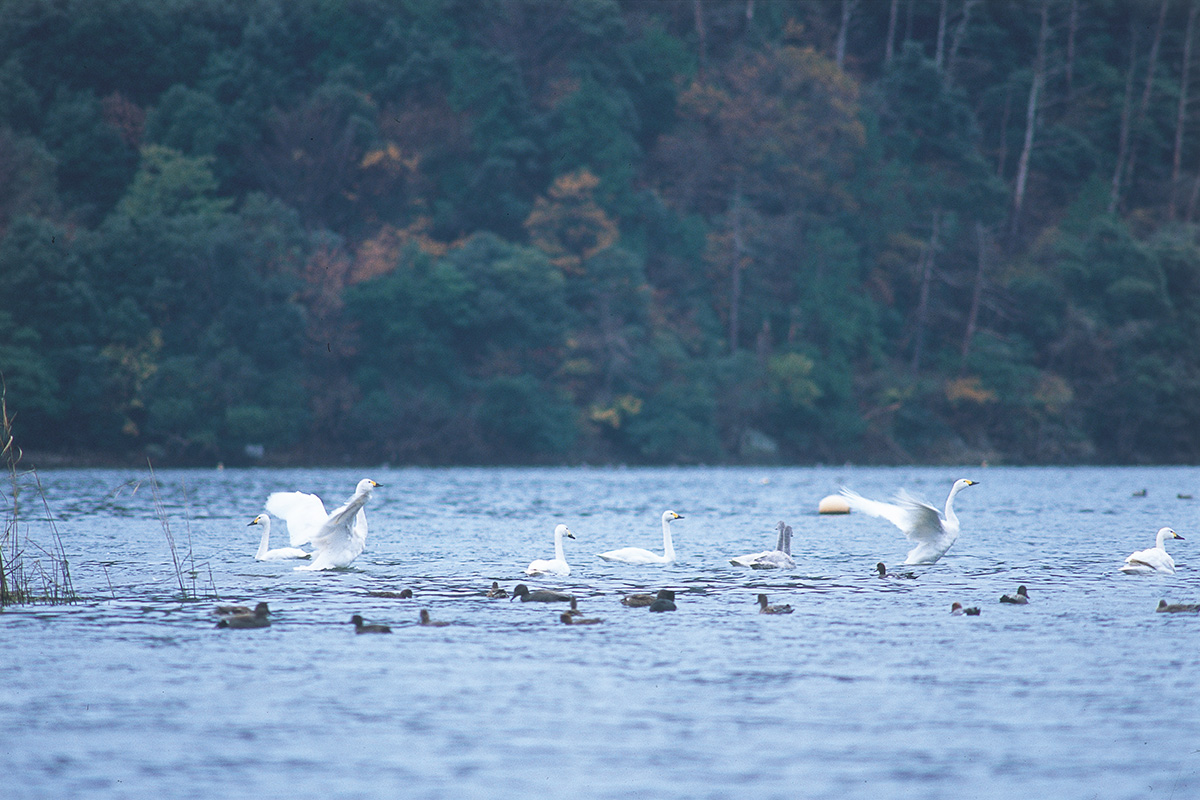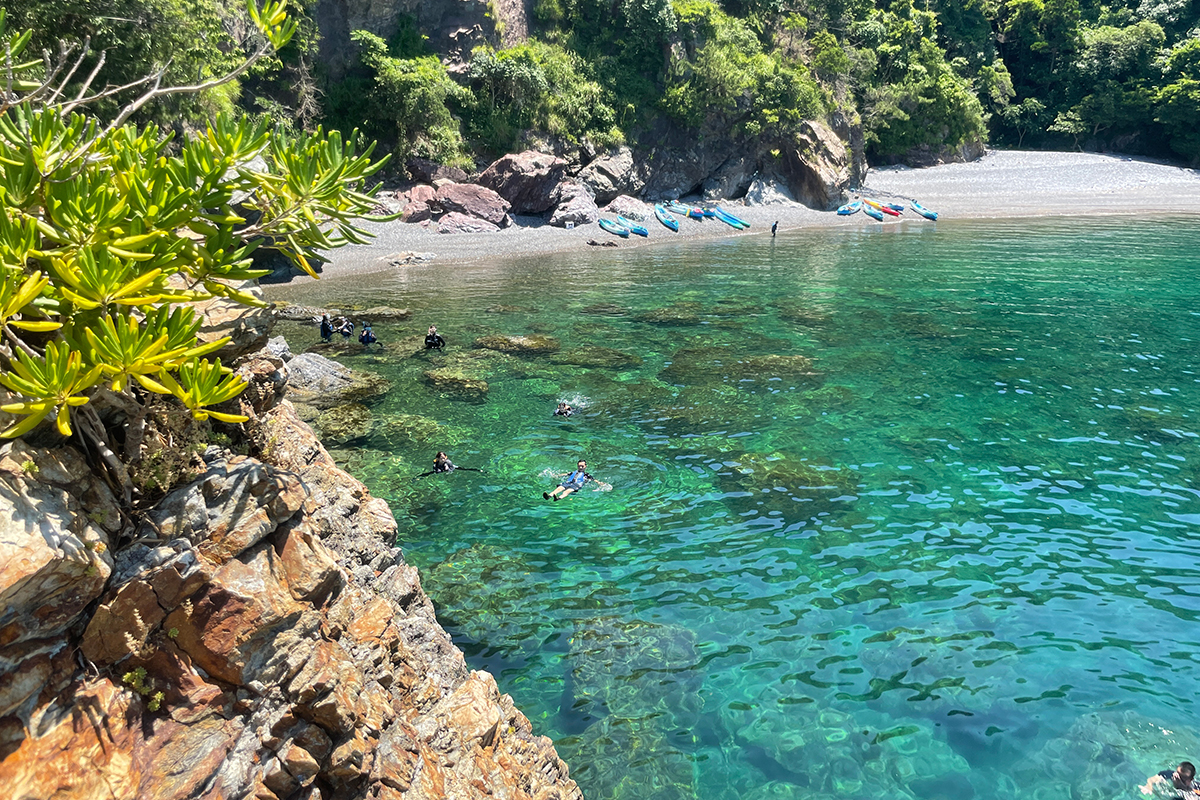
The Wakasa district stretches along the long and narrow coast. It is an area rich in nature in very close proximity to the mountains and the sea. The Five Lakes of Mikata are one of the scenic spots that represent Wakasa Bay Quasi-National Park, and have been widely known for their seasonal beauty since ancient times. In 2005. It was also registered under the Ramsar Convention. Around the lake, there are Jomon period ruins such as the Torihama shell mound, and it was also a suitable place for people at that time to live because there were lakes, forests, and the sea in the vicinity. Even in modern times, seafood such as Wakasa fugu, eel, and blue squid are popular, and it has become a tourist spot visited by people from inside and outside the prefecture in search of beautiful nature.
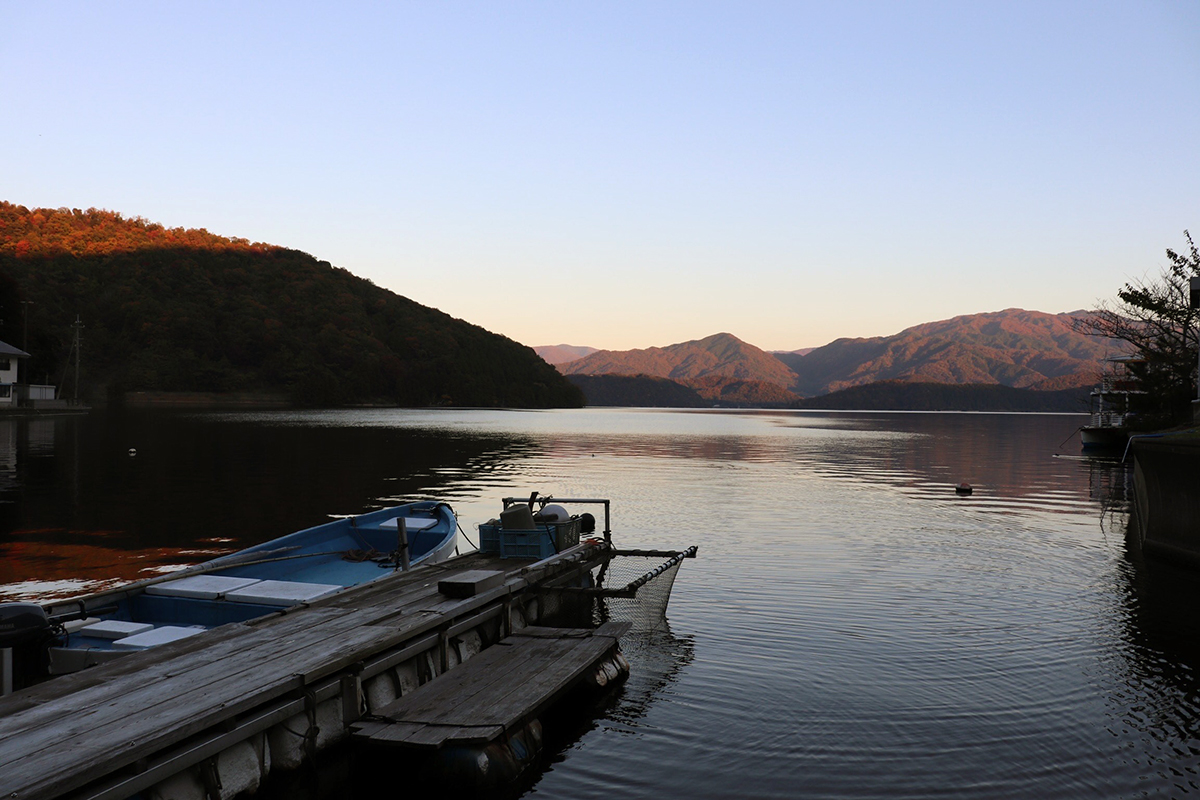
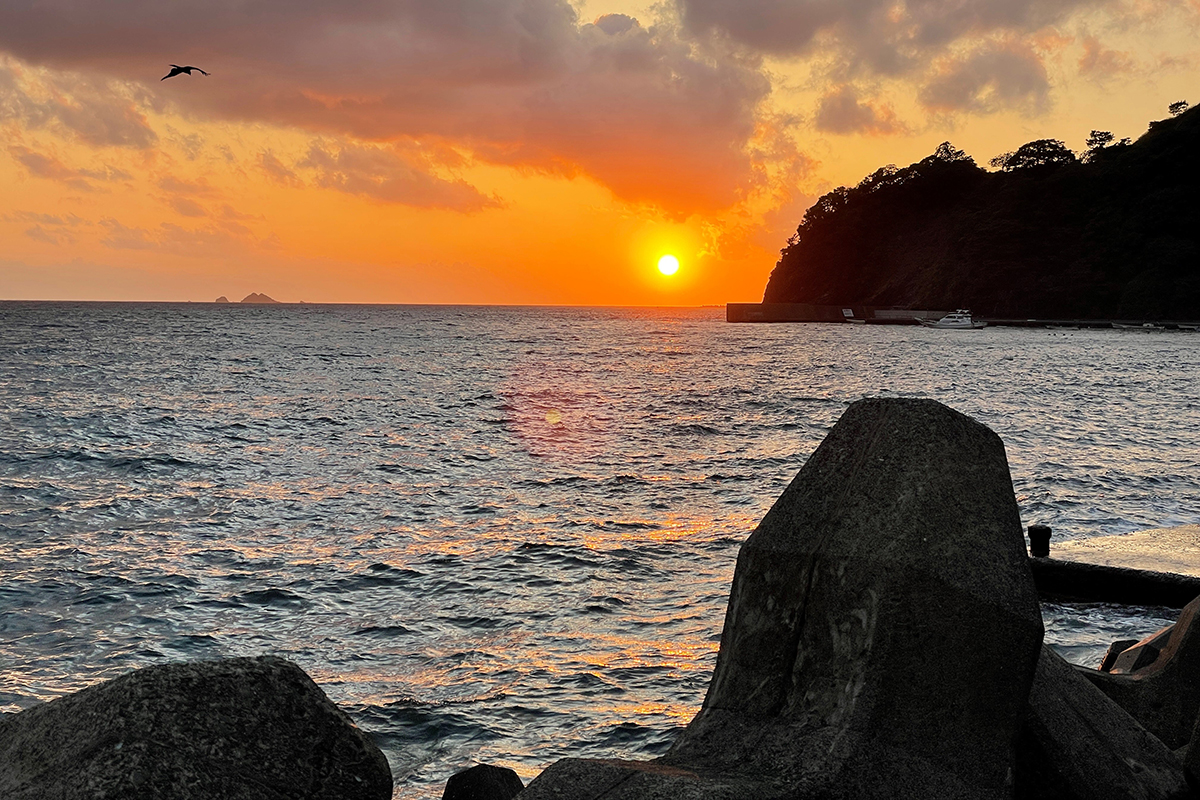
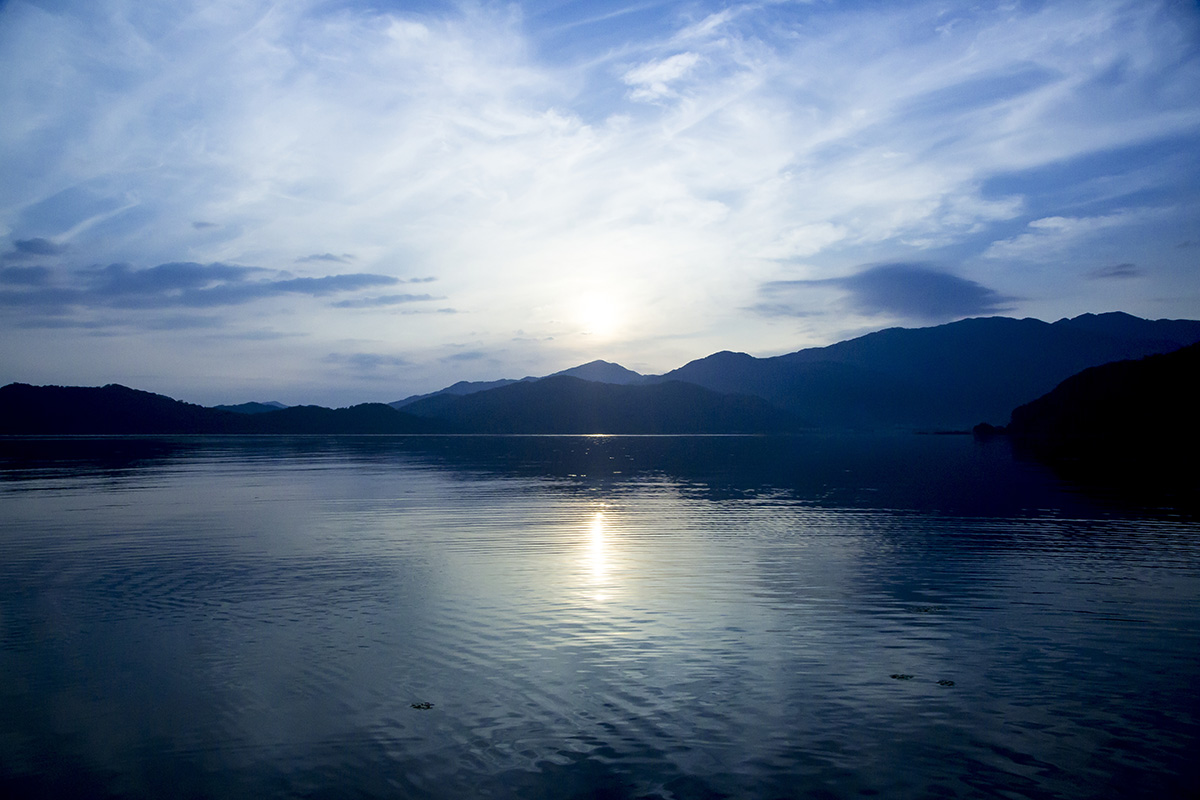
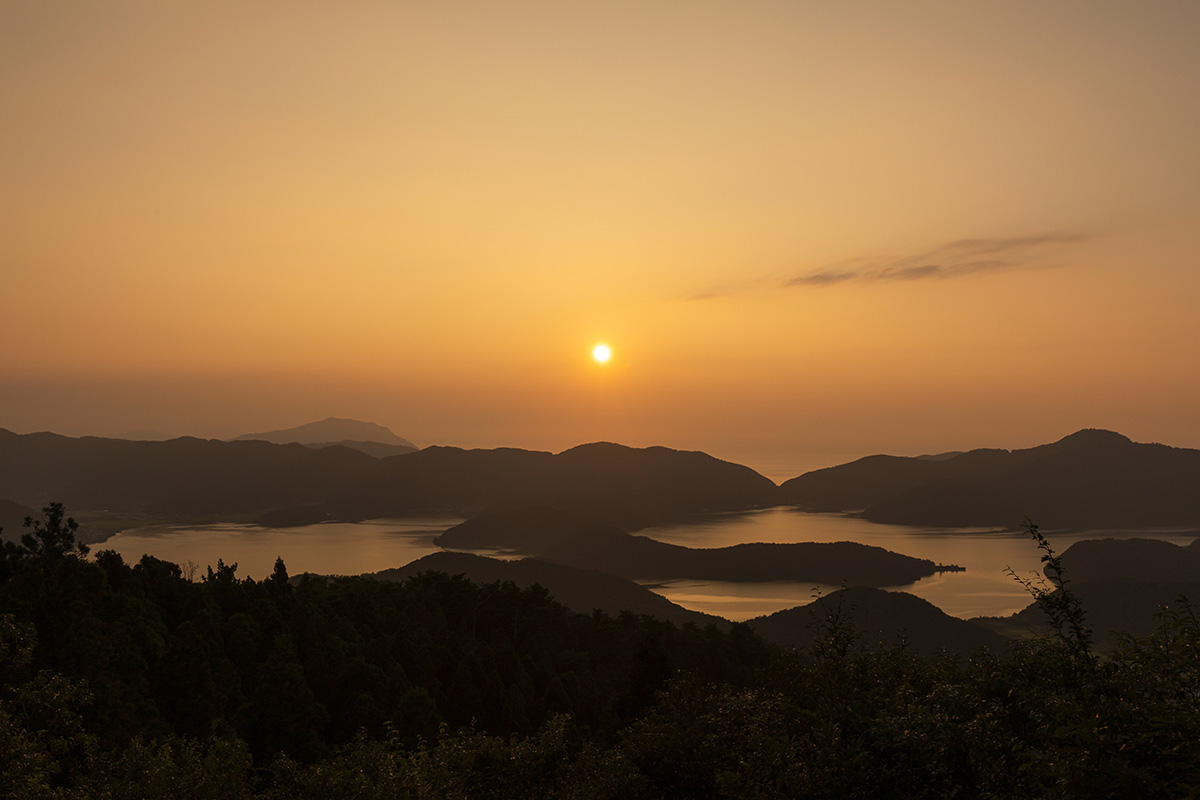
The Five Lakes of Mikata
The Five Lakes of Mikata is the collective name for five lakes that straddle the towns of Mihama and Wakasa in Fukui Prefecture: Lake Mikata, Lake Suigetsu, Lake Suga, Lake Kugushi, and Lake Hiruga. The five lakes are called “five-colored lakes” because the water quality and depth is different for each. As a result, each lake has varying intensities of blue. The area around the Wakasa Mikata Five Lakes contains beaches, lakes, mountains and rivers; a natural environment that is rare even in Japan. In addition, since ancient times, it has been called the “Miketsukuni”, and the food grown in this blessed region of Wakasa have supported the area for centuries.
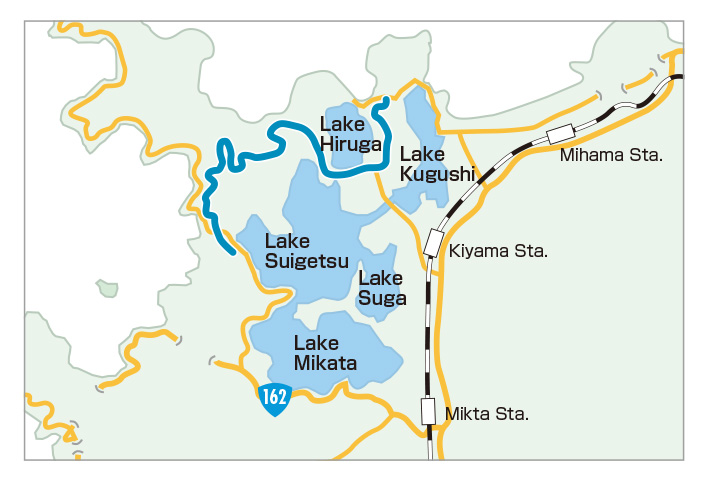
Lake Kugushi
Lake Kugushi is a brackish lake connected to the Japan Sea. In the past clam fishing was popular here. Currently, the number of clams has been decreasing and we are aiming for a revival of the industry. It is also the venue for rowing competitions in the Mihama Townspeople Regatta (every year), the All Japan Professional Championships, and the National Junior High School Selection Rowing Tournament.
Lake Hiruga
Lake Hiruga is connected to the Japan sea by artificially cut Hiruga Aqueduct, and is the lake with the highest salinity among the Five Lakes. It is also used as a fish farm for hamachi, pufferfish, and bream, and many anglers visit the two fishing ponds. Along the shore between the mountains and the lake, the long and narrow Hiruga villages are lined up, and you can feel the atmosphere of a fishing village.
Lake Mikata
Lake Mikata is the farthest from the sea and is the only freshwater lake in the Five Lakes of Mikata because the lotus river flows into it. The traditional fishing method of tapping the surface of the water with a bamboo pole and surprising carp and salmon into the net, “tataki net fishing”, is a winter tradition. In addition, many Jomon period relics such as wooden and lacquer products have been unearthed from the Torihama shell mound near Lake Mikata, suggesting this area has been inhabited since ancient times.
Lake Suga
Lake Suga is the smallest of the five lakes and is a brackish lake where seawater and fresh water mixes. Lake Suga and the entire surrounding area are designated as “Special Wildlife Conservation Areas” where you can observe white-tailed eagles, Steller’s sea eagles, ducks, etc. You can observe many wild birds in winter. It is connected to Lake Suigetsu, and you can go around the lake by sightseeing boat.
Lake Suigetsu
The largest of the five lakes, Mikata Lake is Setoguchi, Kugushi Lake is connected by the Urami River, and it is connected to Hiruga Lake by the Saga Tunnel. It is a brackish lake with half seawater and half freshwater. The varve deposited on the bottom of the lake have been continued for 70,000 years, and the varve of Lake Suigetsu have dramatically improved the accuracy of dating, being used as “a worldwide standard” in archaeology and geology.
